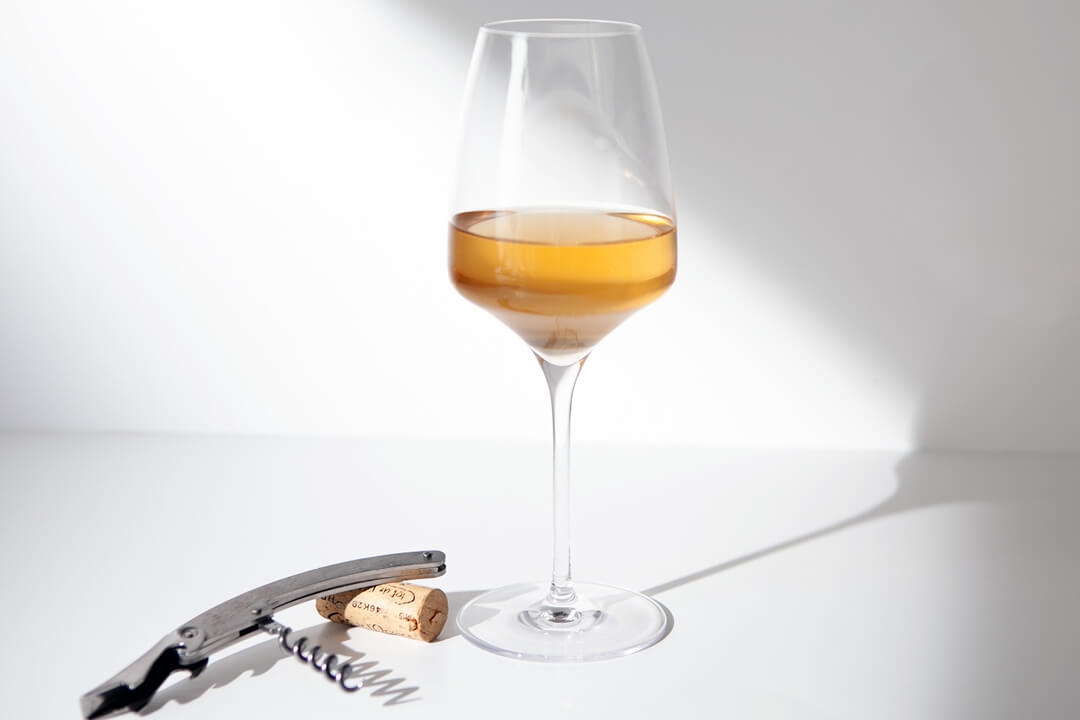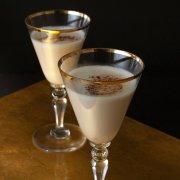Orange wines – so that life remains colorful and winemakers are rewarded for hard work
Still relatively rare, but more and more often, you can find orange wines on the wine list or at the wine merchant. With GloriousMe you are well prepared.
Orange wines
At first glance, after white, red and rosé, you might think the color orange is just a new color trend. After Aperol Spritz now orange wine?
A resounding no.
While Aperol Spitz gets its intense orange color from a liqueur and its (chemical) colorants, there is a different concept behind orange wines.
White wine pressed like red wine
Orange wines owe their color to white wine grapes, which are pressed similarly to red wine. The orange hue can vary greatly, ranging from a very bright orange that resembles red gold to an orange that resembles rusted steel.
In the production of orange wines, the white grapes are stored longer with their skins on the mash, then very gently pressed, filtered by some winemakers and then stored in barrels made of wood or in containers made of steel, concrete or clay.
The clay material gives it away: making orange wines is reminiscent of the old, original way of making wine.

What makes the orange wine interesting
Many (not all) orange wines are produced by winegrowers who are dedicated to natural dynamic viticulture, that is, they produce natural wines.
The signal color orange is a good occasion to pay more attention to the topic of natural wines or biodynamic wines, which have so far led rather a niche existence.
What does biodynamic viticulture mean? In its pure form:
- Renunciation of pesticides
- Abandonment of herbicides
- No addition of yeasts
- Renunciation of all other additives in the wine cellar
- Eliminates the addition of sulfur dioxide (sulfites), which prevent secondary fermentation and make the wine easier to preserve. Sulfites are naturally produced during the fermentation process and are also added in small quantities to some natural wines. Up to a maximum of 30 mg of sulfur per liter, wine may be labeled “Sulfite-Free” in Europe.
Sounds good for your head the next morning. That sounds good for nature. That sounds good for the future.
For the winemaker this means:
- More work
- More cost
- More harmony with nature
- More care for the soil of the vineyard
- More surprises
Nature cannot be controlled.
If you find an orange wine: Try
This is meant literally. Orange wines are still relatively rare to find. Few winemakers produce it.
Among them are very renowned winemakers, such as the traditional Domaine Zind-Humbrecht in the French Alsace, who, after decades of conventional viticulture, want to follow a new path that is less depleting of the soils in their vineyards.
Orange wines are also produced by some young winemakers who, with great enthusiasm, a lot of manual work and diligence, believe in viticulture without chemicals.

Terroir taken seriously and not just a phrase
The magic word terroir loves every wine connoisseur. Because isn’t that exactly what we want to taste?
The environment in which the particular wine was created: the nature of the soil, where the vines may have had to fight for every drop of water, the plant life in the vineyard, the climate of the region.
Sounds obvious, but it’s not.
Where does my wine come from and what’s in it?
Even the strictest wine regulations still leave plenty of room for interventions in the cellar that have little to do with nature.
The majority of consumers expect a relatively standardized product, for the description of which exotic fruits are readily used “Reminiscent of mango with a hint of citrus and subtle hints of vanilla in the finish” even if the wine comes from an area where only potatoes and cabbage grow really well.
Natural wines want to show off the terroir much more. Because without artificial additives and blending with wines from other regions, the only thing that remains to differentiate the wine is its terroir on which the vines are grown, as well as the care and stylistics of the winemaker.

Orange wine as natural wine is a niche product
Orange Wine as a natural wine can not be produced at a low price. Because it naturally defies high standardization, it is rarely found on most restaurant wine lists.
A quality that varies greatly from year to year, making distribution more costly and explanation at the guest’s table more lengthy, is not possible or desirable everywhere.
The number of restaurateurs, such as the Emma Metzler restaurant in Frankfurt am Main or the Glacis Beisl in the Museumsquartier in Vienna, who have consciously adapted their wine offerings to natural wines is still small.
Restaurants, such as Naughty Piglets in London, that offer only natural wines and feature orange wines as a separate category in their wine list are still rare.
So that life remains colorful
The first try probably won’t make you a fan of orange wine right away. Unlike the usual white wine and the pleasing rosé wine, the orange wine is more individual, usually a bit rougher and takes more getting used to.
This is exactly what makes it interesting and speaks in favor of trying orange wine for example after a visit to a wine merchant whose heart beats (also) for natural wines.
When you get home, try the orange wine with a bar of dark chocolate. A beautiful combination.

After all, we know that all eyes are on you at the restaurant table when it comes to ordering wine.
At a business dinner where you want things to go as smoothly as possible at the table, we wouldn’t recommend going for orange wine. After all, all of our palates are far too trained to the previous range of wines.
In a discovery-minded, wine-interested group of friends, a first foray into orange wine terrain can be fun and start a lively discussion about wine preferences.
Discover soon on the wine list orange wine, you are well prepared.




